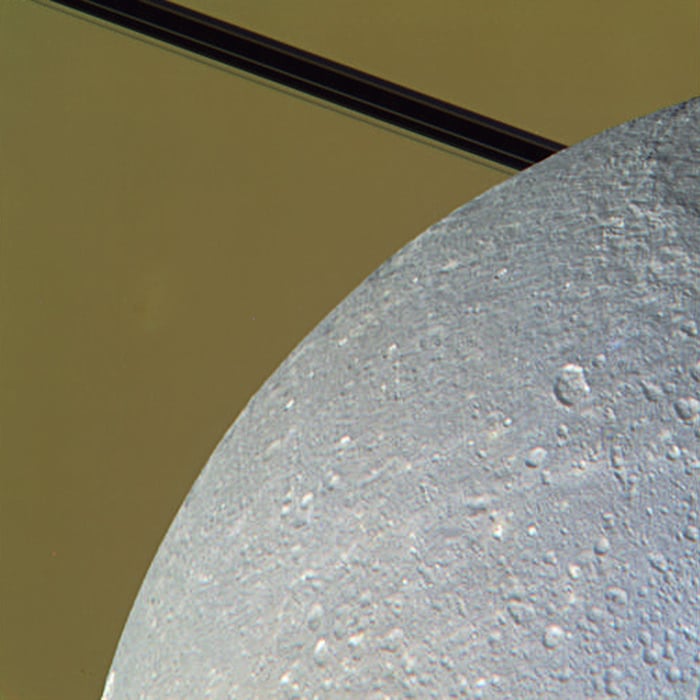[/caption]
After completing its most
recent flyby of Enceladus
, Cassini made a pass by Dione -- its final visit of the icy moon for the next three years. Coming within 5,000 miles (8000 km) of Dione on May 2, Cassini captured some fantastic images of the moon's heavily-cratered and frozen surface. Here's just a few of the raw images that arrived back here on Earth earlier today:
[caption id="attachment_94993" align="aligncenter" width="580" caption="Crescent-lit Dione, with some reflected light via Saturnshine"]
[/caption]
[caption id="attachment_94994" align="aligncenter" width="580" caption="A nearly fully-lit Dione, with Saturn's rings in the background"]
[/caption]
[caption id="attachment_94995" align="aligncenter" width="580" caption="Dione's extensively-cratered limb"]
[/caption]
[caption id="attachment_94996" align="aligncenter" width="580" caption="Some of Dione's signature "wispy lines", bright icy faces of sheer cliffs now known to be tectonic in origin"]
[/caption]
[caption id="attachment_94997" align="aligncenter" width="580" caption="A color-composite image of an ancient impact crater on the edge of Dione's Saturn-facing side - this could be from the impact that spun the moon 180 degrees. (NASA/JPL/SSI/J. Major)"]
[/caption]
698 miles (1123 km) in diameter, Dione orbits Saturn at about the same distance that the Moon orbits Earth. Its composition is two-thirds water ice, which at the incredibly cold temperatures found around Saturn behaves like rock does here on Earth.
Cassini won't visit Dione so closely again until June 2015, after spending three years angled high out of the equatorial plane while it studies Saturn's rings and polar regions.
As Carolyn Porco, Cassini Imaging Team Leader said today, "This is exploration at its finest. It won't continue forever. So, enjoy it while it lasts!"
See more on the Cassini Imaging Central Laboratory for Operations (CICLOPS) site
here
.
Image credits: NASA/JPL/Space Science Institute
 Universe Today
Universe Today
